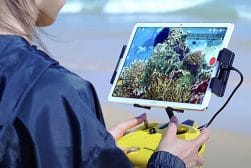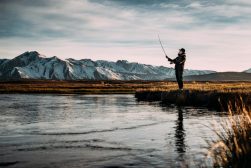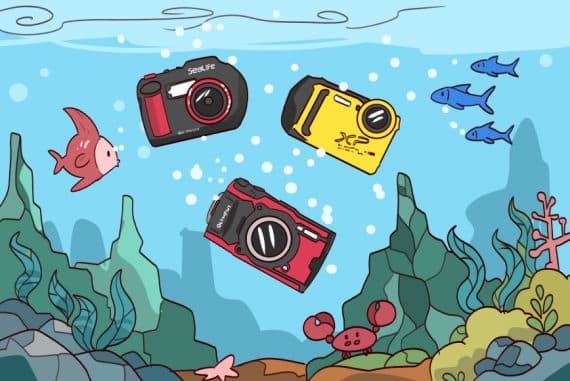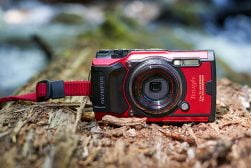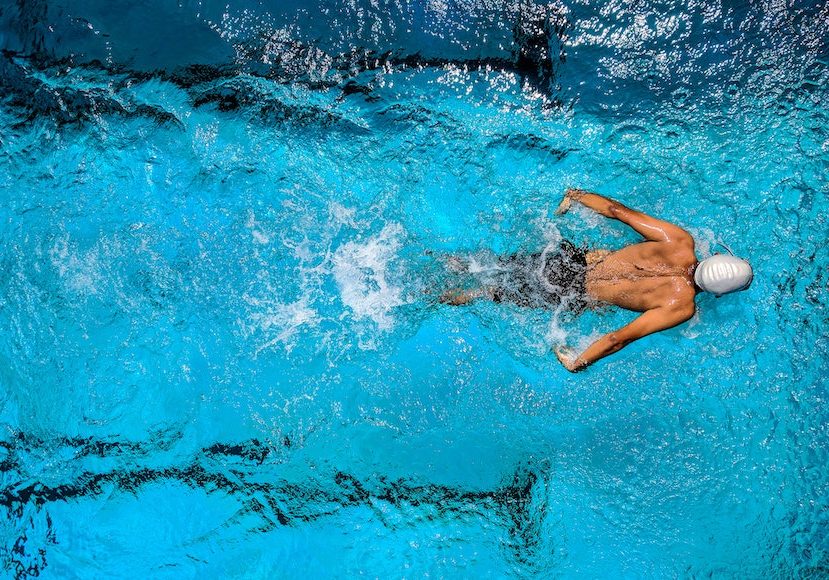
Swimming Photography Tips (+ Swim Team Photo Ideas)
Learn how to capture stunning photos of swimmers both above and underwater with expert tips and creative swim team photography ideas.
Learn | By Ana Mireles
If you’re just starting in swimming photography, you’ll find some useful tips and tricks in this article.
Everything from gear to editing, from above the water to underwater.
You’ll even find some tips to photograph the pool, and swimmers will find some posing ideas.
Let’s dive in!
Table of Contents
Essential Equipment for Swimming Photography
Here’s some equipment advice to help you capture great swimmer photos.
Best Cameras for Swimming Photography
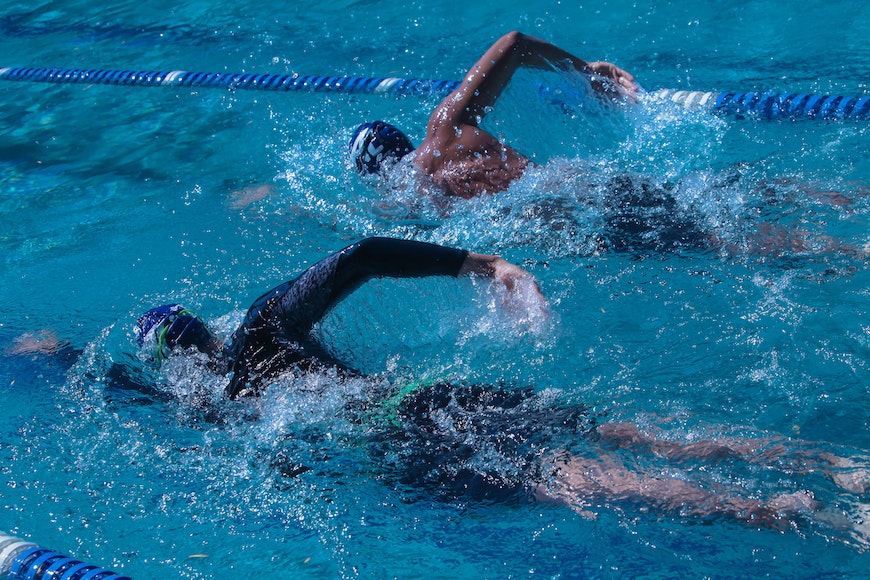
Credit: Sebastian Angarita
If you want to get into professional sports photography and specialise in swimmer photos, here are some things to consider when choosing the best camera for swimming photography.
Full-frame cameras have a better performance in low-light conditions which is very helpful in swimming photography.
If you’re on a budget, though – an APS-C camera will be much more affordable not just because the camera body is less expensive but also because of the crop ratio, which will get you longer focal lengths even when buying shorter lenses.
Whichever format you choose, you need a camera with a high burst rate. You’ll need to capture the swimmer’s stroke at the right time, and this is easier to do with a 12-fps camera than it is with a 3-fps one.
You’ll also need to consider a fast autofocus system. You need your camera to track the swimmer and adjust the focus quickly and accurately.
Last but not least, choose a camera with good weather and waterproofing. You’ll be working in high-humidity spaces, and you’ll probably get splashed often.
Best Lenses for Swimming Photography
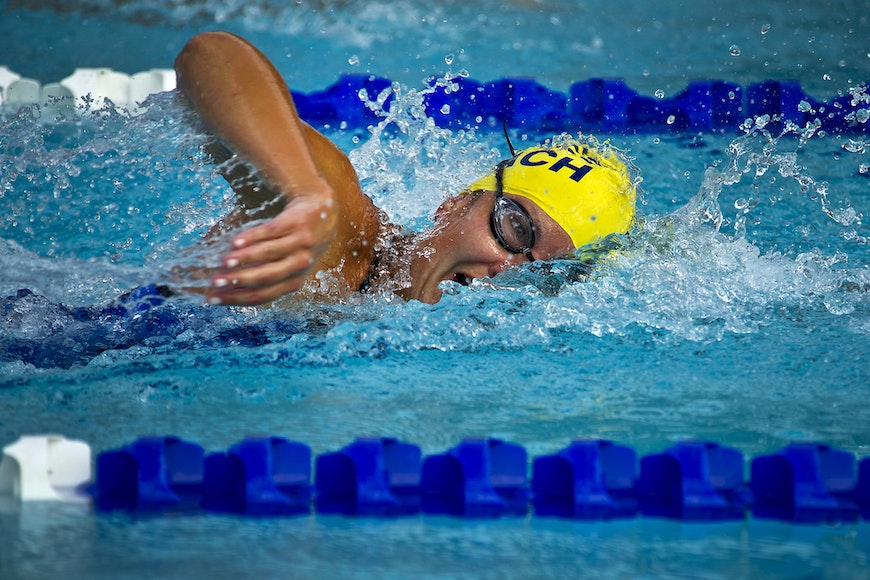
Credit: Pixabay
Aside from a few environmental shots, you’ll usually be shooting close-ups of the swimmer’s face and strokes. So, you’ll mostly need long lenses for swimming photos.
Depending on the size of the swimming pool and your position, you’ll need telephotos ranging from 400mm to 800mm.
A zoom lens allows you to change your position without needing to change lenses. This prevents the risk of getting humidity inside the camera or a splash hitting the sensor.
However, some photographers prefer the quality of a prime lens. Also, prime lenses have wider apertures. This is helpful when shooting indoor pools because swimming is a fast-moving sport.
So, what is the best lens for swimming photography?
If you’re shooting on a 50m pool and you prefer a prime lens, use a 600mm telephoto.
If you prefer zoom lenses, 200-600mm is a good choice for long-course pools. Otherwise, you can use a 100-400mm lens for shorter pools or places where you can get closer to the swimmers.
If you can bring a second camera body, include a 16-35mm to capture the environment, shoot remote at the starting blocks, etc.
You should also read our guide to the best lenses for sports photography to get broader understanding of what’s important.
Underwater Housings
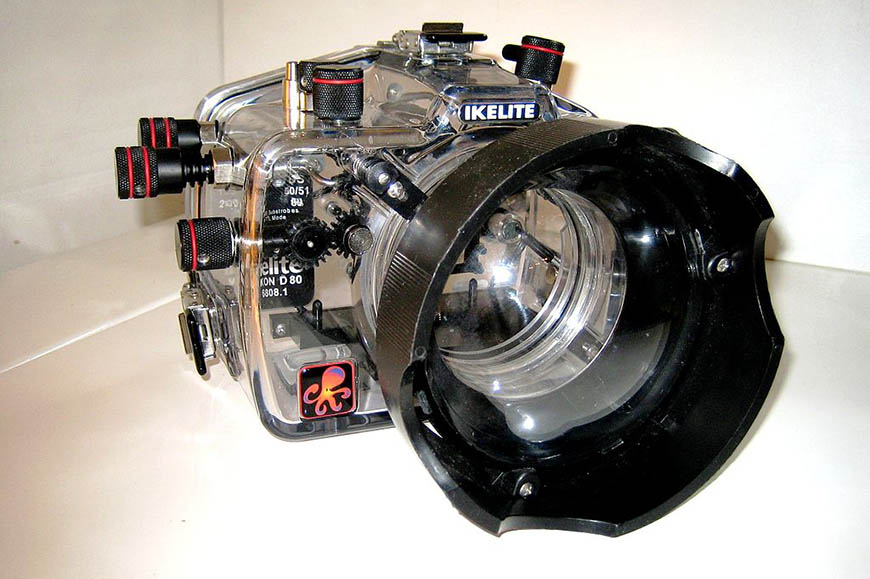
Albert kok, CC BY-SA 3.0, via Wikimedia Commons
If you’re shooting underwater, you’ll need to protect your camera with an underwater housing. This is what protects your camera from water damage. Here are the things to consider before buying:
- Depth rate. This relates to how deep you’re going to dive. When you’re shooting swimmers, you usually don’t need to go very deep. However, you should always get housing with a depth rate that exceeds your needs.
- Material. Most housings are made of plastic which works really well. However, if you want something more durable that resists more pressure, then get an aluminium one.
- Design and ergonomics. You’ll want to have easy access to key dials and buttons on your camera. Also, consider the closing mechanism; clasps work better than screws for fast access if you need to change your battery often. Check the weight and buoyancy to make sure you can move as you need.
- Lens port. Usually, the lens port is sold separately from the housing. You’ll need a curved dome for wide-angle lenses and a flat one for macro shots.
Lighting and Flash
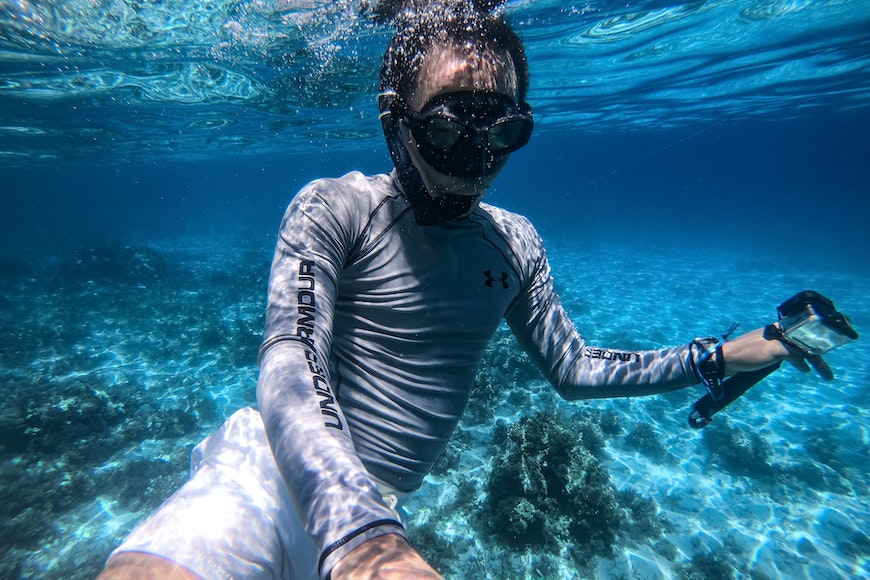
Credit: John Cahil Rom
Shooting above water, you’ll usually use ambient light. Otherwise, you can use the same lighting equipment used for other types of photography.
The tricky part is working underwater. The amount of light drops quickly as you get deeper into the water. So, ambient and natural light are only advisable for shallow shots – which is usually the case when shooting swimmers.
If you need more light, you can connect strobes to the camera housing. Another solution is to use waterproof LED panels – if you have an assistant, they can light the swimmer as you shoot.
Learn from the inspirational images taken by these famous underwater photographers.
Techniques and Tips for Capturing Swimmers in Motion
Above the Water Photography
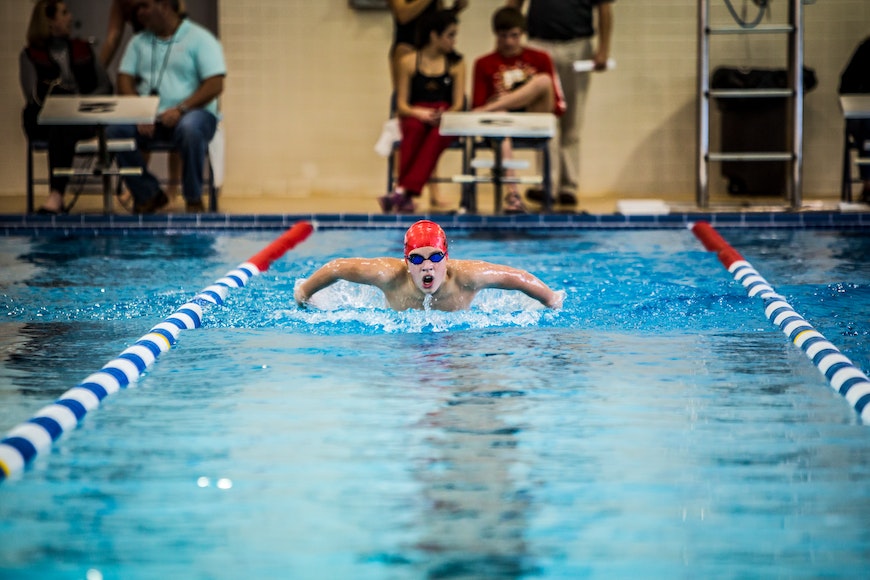
Credit: Pixabay
Regarding framing and composition, you’ll want to focus on the swimmer’s face. There are a few standard shots depending on the stroke. Butterfly swimming is usually captured from the front, the same as breaststroke. Freestyle can be done from the side, and backstroke from the side.
Usually, you’ll want to freeze the swimmer in the action shots. That’s why most people wonder what is the best shutter speed for swimming. You should start at 1/1000 and work your way up if needed.
If you’re getting too much glare on the surface of the water, try changing your position. A polarizing filter is not the best option if you need to move constantly and act fast. Also, it lowers the exposure, which isn’t great for swimming photography.
Underwater Photography
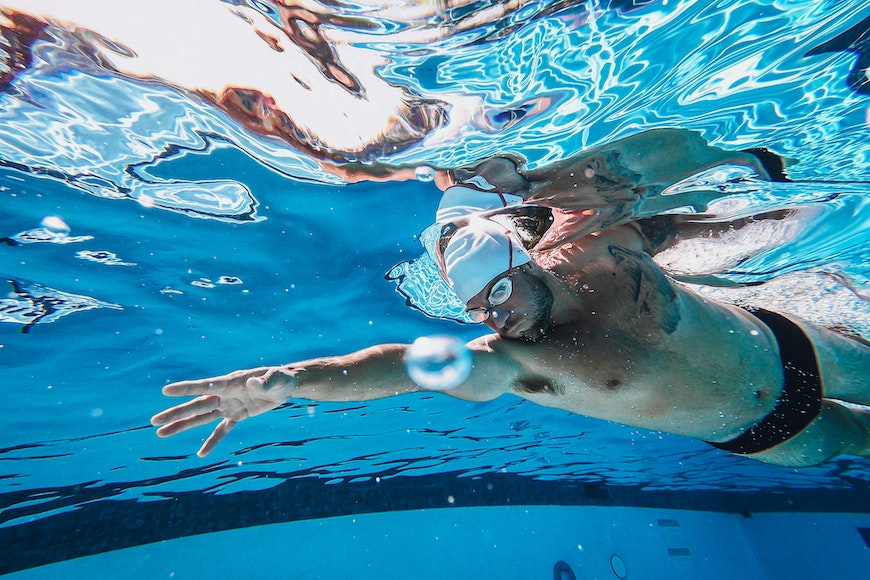
Credit: Kindel Media
Whenever possible, use a remote system to capture your underwater photos without disturbing the swimmers. Otherwise, use a BCD and breathing to achieve neutral buoyancy.
What camera settings are best for underwater photography? It all depends on the light conditions and the result you want. As a general rule, you’ll want a shutter speed above 1/1000 to freeze motion.
Try to keep the ISO below 800 – this depends on how well your camera handles high ISO numbers. As for the aperture, if the light allows, it aims to hit the lens’ sweet spot between f/8 and f/11 to have a larger depth of field.
What is the best focal length underwater photos? This depends on the type of race. You can use an 11-22mm lens or a 28-70mm one.
Please consider that you’ll lose color, sharpness and contrast.
Post-Processing Tips
A lot of beginner photographers get underwhelmed with the results of their underwater photos and wonder how to make water look good in pictures.
It’s important to understand that certain colors disappear once you go deeper into the water. So, doing some color grading will help you fix that.
You’ll also want to control the exposure to get rid of the glare and add some contrast. Last but not least, use the Clarity and Dehaze tools to make your photos look sharper.
Techniques and Tips for Swimming Pool Photography
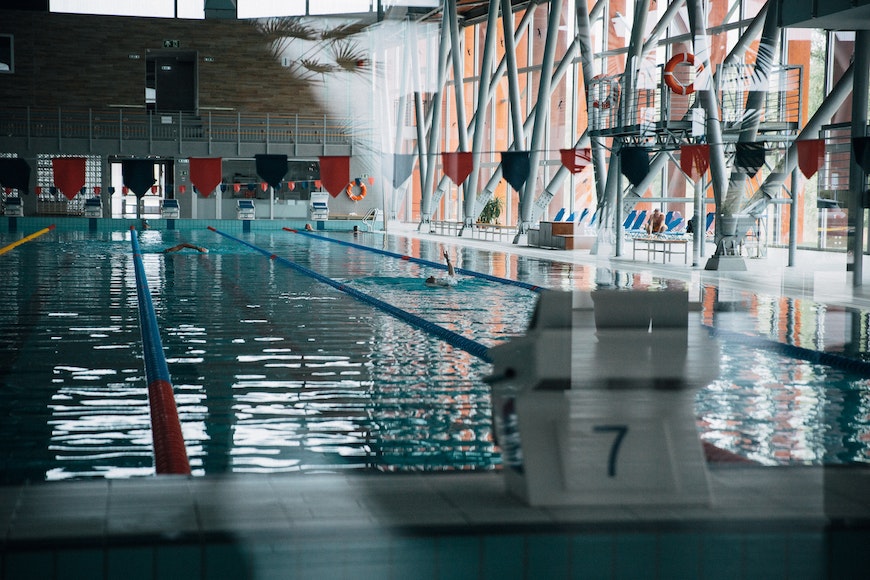
Credit: Bence Szemerey
You might want to take some photos of the venue as well. Here are a few tips for you to get better results.
How do you take good pictures of a swimming pool?
- Take care of the glare by using a polarizing filter or try different perspectives
- Find interesting reflections to improve your composition.
- Use HDR photography if it’s an indoor pool, but there are bright windows.
What are the best camera settings for swimming pools?
Try using a tripod so you can extend the shutter speed. Then, use a low ISO – 100 if possible. Set the aperture to the sweet spot of the lens to have most of it in focus. If necessary, try focus stacking.
What should I caption my pool pictures?
- “Swimming is life”
- “Life on the water”
- “It’s time to make a splash”
- “Diving into the weekend”
- “At the pool from Monday to Sunday”
- “Butterfly”
- “Freestyle”
- “Ready to dive”
- “Practice”
Overcoming Challenges in Swimming Photography
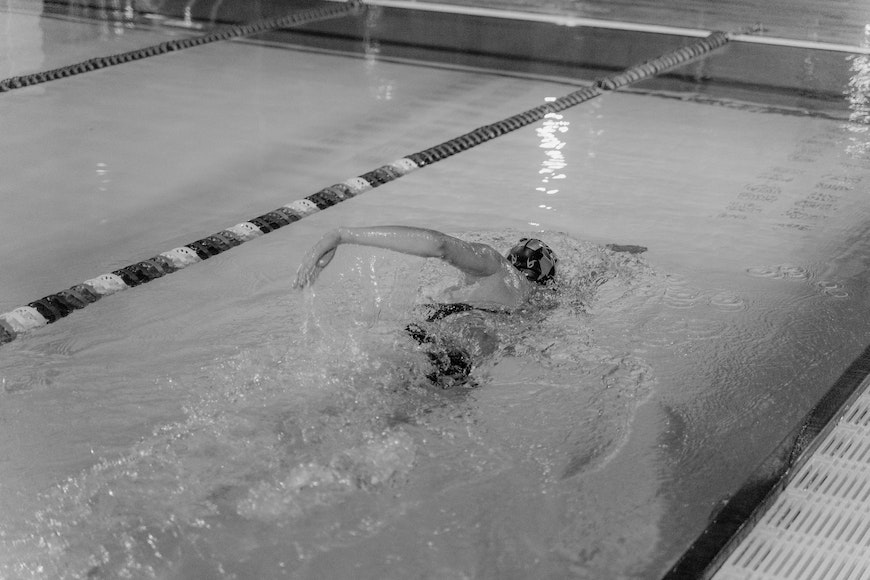
Credit: Tima Miroshnichenko
Handling Moving Subjects
- Use continuous autofocus mode (AI servo focus in Canon) with a single focus point.
- Use a fast shutter speed – at least 1/1000. If you can’t use a fast shutter speed, try panning to keep the subject in focus. Otherwise, use motion blur wisely
- Understand the sport to predict the movements of the swimmer.
- Use the heat sheets to know where the swimmers are going to be throughout the competition.
Managing low-light conditions
- Use ISO 200 if possible – otherwise, crank it up to 800. Try to avoid going over that.
- Upgrade your gear. Newer cameras and full-frame formats create less noise at higher ISO values.
- Use noise reduction in your editing.
- Whenever possible, use artificial lighting.
Navigating Crowded Pools and Competitions
Professional competitions usually offer guidelines, so you’ll know how to behave. They often assign positions to each photographer, and you’re not allowed to change or move. Moving might only be allowed in between races.
Some venues allow the use of strobes, but it’s always best to check beforehand. The same goes for remote cameras to be placed underwater or next to the starting blocks.
Amateur swim meets may be more flexible. Use your common sense keeping in mind that you shouldn’t disrupt the athletes and that safety should be your number one concern.
Tips for Swimmers Having Swim Meet Photoshoots
Sometimes there are photo shoots scheduled during a swim meet to take photos of the athletes different from the competition action shots.
If you’re one of the swimmers facing this shoot, here are some tips.
How do you look good in underwater pictures?
The best trick for underwater photography is to breathe regularly. This will give the photographer the opportunity to capture you without the stream of bubbles.
Keep good communication with the photographer and ask any questions before you go in. After that, just have fun and let the photographer worry about the rest.
How should I pose for pictures in a swimming pool?
Here are some classic swimmer photo poses.
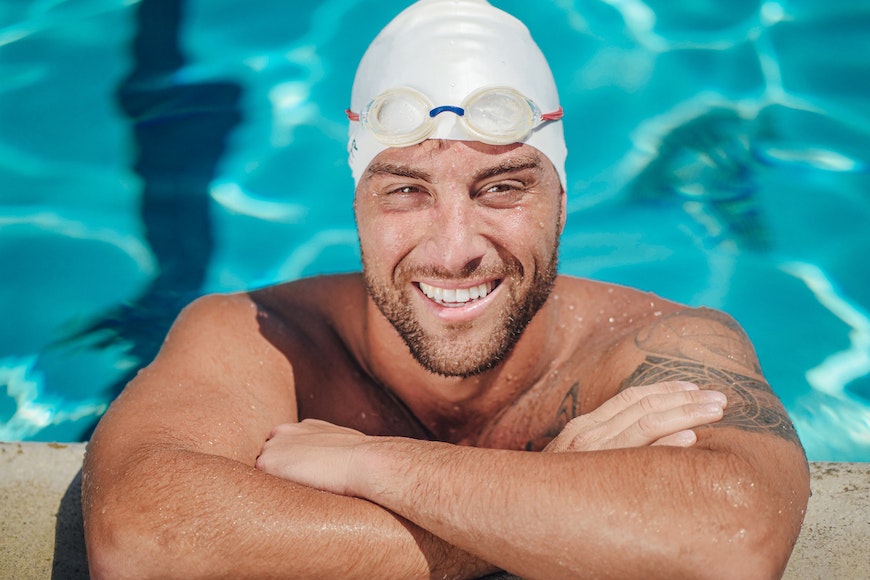
Credit: Kindel Media
Arms outside the pool.
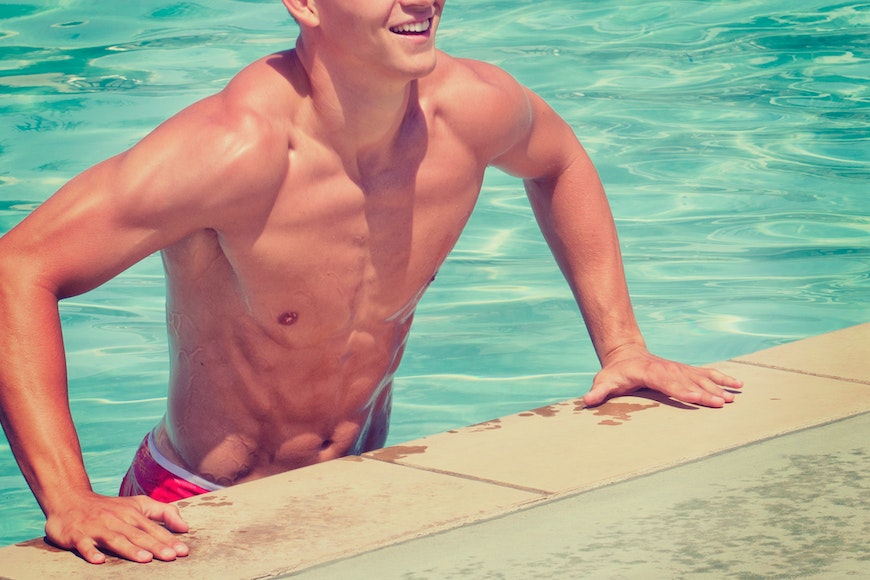
Credit: Tim Mossholder
Push yourself up to get half of your body out of the water.
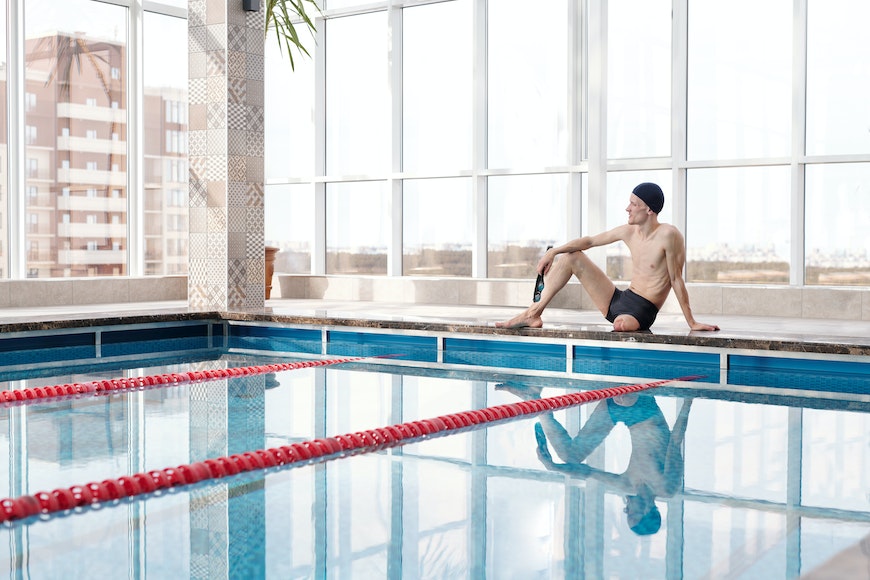
Credit: Shotpot
Sitting on the edge of the pool.
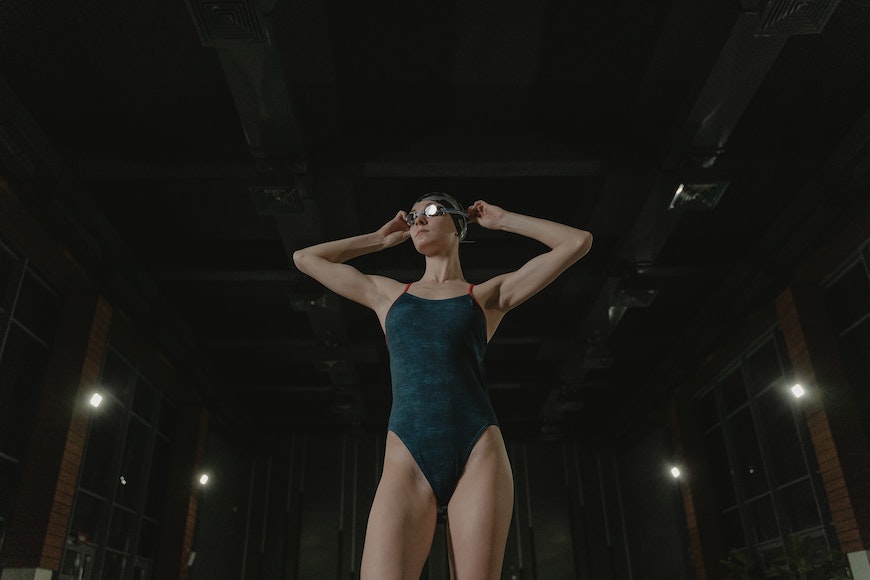
Credit: Tima Miroshnichenko
Standing by the pool with your arms up, fixing the goggles or the cap.
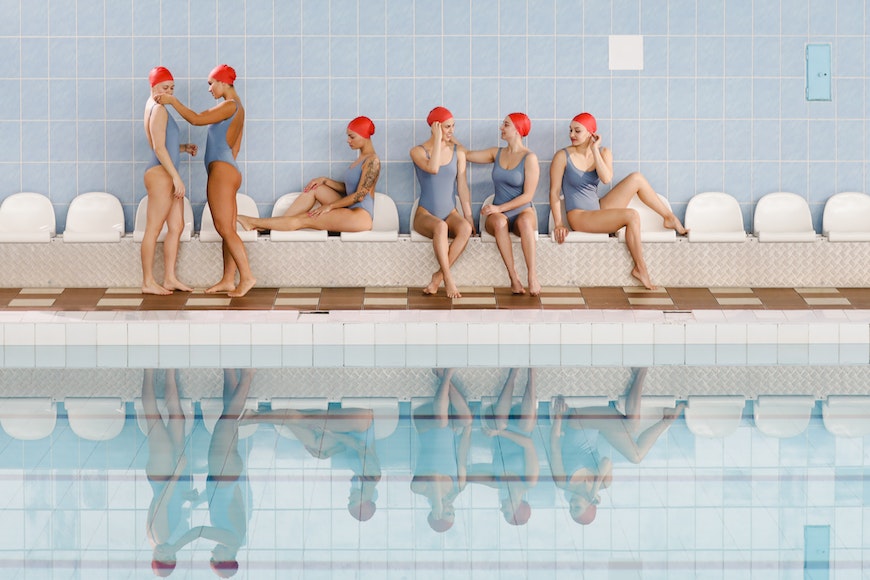
Credit: Cottonbro Studio
The team sitting by the pool.
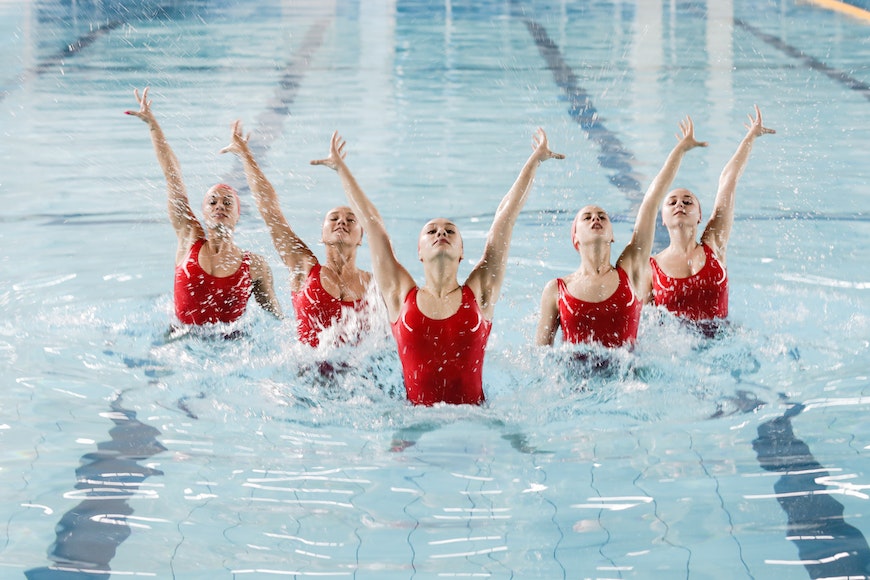
Credit: Cottonbro Studio
The team jumping out of the water.






